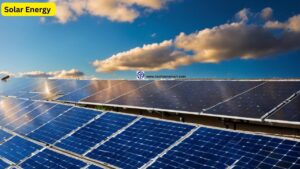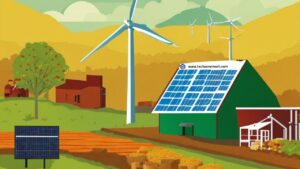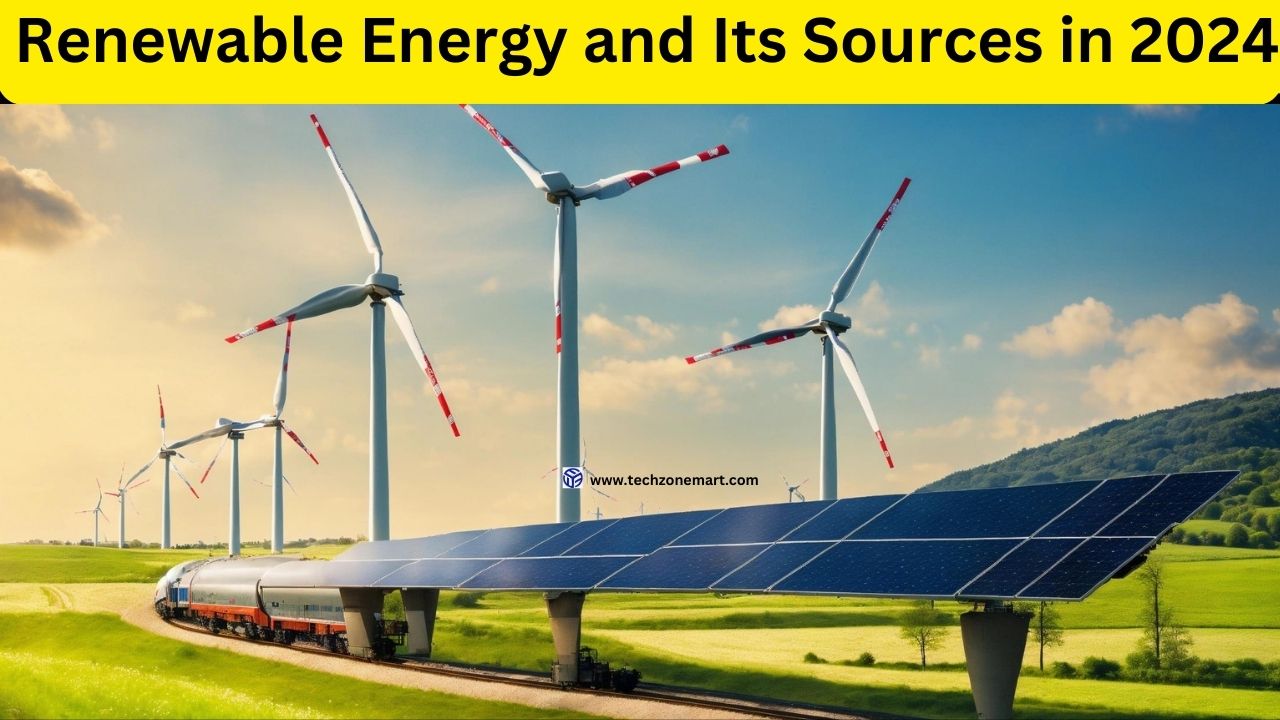Renewable energy is super important today. With the global push to reduce carbon emissions and combat climate change, understanding and using renewable energy sources is vital for a sustainable future. But what exactly is renewable energy, and why is it so essential in 2024?
What is Renewable Energy?
Definition and Overview
Renewable energy comes from natural sources that replenish themselves over short periods, making them virtually endless compared to finite fossil fuels. Renewable energy sources include sun, wind, water, Ocean waves, and thermal heat.
Renewable energy sources are sustainable and have a lower environmental impact than traditional energy sources. They are crucial for reducing greenhouse gas emissions and dependence on fossil fuels.
“India’s Renewable Energy Revolution: These Are Top 10 Leading Companies “
Major Sources of Renewable Energy
Solar Energy

Solar energy is one of the most usable and major forms of renewable energy. It involves converting sunlight into electricity using photovoltaic cells or solar thermal systems.
Wind Energy
Wind energy works with the power of wind through turbines to generate electrical energy. Wind farms can be located onshore or offshore, each with its own set of benefits and challenges.
Hydropower
Hydropower, or hydroelectric power, generates electricity by using water flowing from higher to lower elevations. This movement turns turbines connected to generators.
Biomass Energy
Biomass energy involves converting organic materials, such as plant and animal waste, into usable energy. It can be a sustainable option if managed properly.
Geothermal Energy
Geothermal energy taps into the Earth’s internal heat to produce electricity and provide direct heating. This energy source is particularly effective in regions with high geothermal activity.
Solar Energy
How Solar Panels Work
Solar panels consist of many photovoltaic cells that directly convert sunlight energy into electricity power. When sunlight hits the cells, it excites electrons, creating an electric current.
Advancements in Solar Technology
Recent advancements include more efficient photovoltaic cells, solar roof tiles, and solar farms. Innovations like bifacial panels and solar tracking systems increase energy capture.
Benefits and Challenges
Solar energy is clean and abundant, but it faces challenges such as intermittency and the need for large areas for solar farms. Battery storage solutions are improving but remain costly.
Wind Energy

Mechanics of Wind Turbines
Wind turbines work by using wind to spin blades connected to a rotor, which then turns a generator to produce electricity. The design and placement of turbines are crucial for maximizing energy output.
Offshore vs. Onshore Wind Farms
Offshore wind farms generally have higher and more consistent wind speeds compared to onshore farms, leading to higher efficiency. However, they are more expensive to build and maintain.
Environmental Impact
Wind energy has a low environmental impact but can affect local wildlife, particularly birds and bats. Modern designs and careful site selection help mitigate these effects.
Hydropower
How Hydroelectric Dams Operate
Hydroelectric dams store water in a reservoir. When released, the water rapidly flows through turbines, to generate electricity. It’s a reliable and consistent power source.
Micro-Hydro Systems
Micro-hydro systems are small-scale setups that can provide power to rural or remote areas. They are less invasive and more sustainable for local communities.
Advantages and Disadvantages
Hydropower is highly efficient and produces no direct emissions, but it can disrupt local ecosystems and displace communities.
Biomass Energy
Types of Biomass Materials
Biomass materials include wood, agricultural residues, and animal waste. These can be burned directly for heat or converted into biofuels.
Conversion Processes
Biomass can be converted into energy through processes like combustion, anaerobic digestion, and gasification. Each biomass method has its power-generating efficiency.
Sustainability Concerns
While biomass is renewable, its sustainability depends on responsible sourcing and management to prevent deforestation and soil depletion.
Geothermal Energy
Harnessing Earth’s Heat
Geothermal energy is harvested by tapping into heat stored beneath the Earth’s surface. This can be done through geothermal power plants or direct-use applications.
Geothermal Plants and Their Efficiency
Geothermal plants are highly efficient and provide a constant power output, unlike some other renewable sources. They are particularly effective in geologically active regions.
Limitations and Potential
Geothermal energy is geographically limited and can have high upfront costs. However, its potential for reliable, long-term energy production is significant.
The Role of Technology in Renewable Energy
Innovations Driving Efficiency
Technological advancements are crucial for improving the efficiency and reducing the costs of renewable energy systems. Innovations include more efficient solar cells, advanced wind turbine designs, and improved energy storage solutions.
Smart Grids and Energy Storage
Smart grids enhance the efficiency and reliability of energy distribution by integrating various renewable sources. Energy storage systems, such as batteries, are vital for managing supply and demand.
Economic Impacts of Renewable Energy
Job Creation and Industry Growth
The renewable energy sector is a significant job creator, employing manufacturing, installation, and maintenance. It also stimulates economic growth through investments and technological innovation.
Cost Comparisons with Fossil Fuels
While the initial costs of renewable energy projects can be high, they often have lower operating costs compared to fossil fuels. Over time, this makes them more cost-effective.
Environmental Benefits
Reduction in Greenhouse Gas Emissions
Renewable energy sources produce little to no greenhouse gas emissions during operation, helping to combat climate change and reduce air pollution.
Mitigating Climate Change
By replacing fossil fuels with renewable sources, we can significantly reduce our carbon footprint and mitigate the adverse effects of climate change.
Government Policies and Incentives
Subsidies and Tax Breaks
Indian government issues subsidies and tax incentives to encourage more people the adopt renewable energy. These financial incentives make it more affordable for individuals and businesses to invest in renewable technologies.
International Agreements and Goals
Global agreements, such as the Paris Agreement, set targets for reducing carbon emissions and increasing the use of renewable energy. These agreements drive international cooperation and policy development.
Challenges Facing Renewable Energy Adoption
Intermittency and Reliability
Renewable energy sources like solar and wind are intermittent, meaning they don’t produce energy all the time. Developing reliable energy storage and grid management systems is essential to address this challenge.
Infrastructure and Investment Needs
Expanding renewable energy infrastructure requires significant investment in new technologies, grid upgrades, and maintenance. Public and private funding is crucial for this expansion.
Future Prospects of Renewable Energy
Predicted Trends for 2024 and Beyond
The future of renewable energy looks promising, with continued growth and technological advancements. Trends include increased adoption of solar and wind power, improvements in battery storage, and the development of new renewable technologies.
Emerging Technologies
Emerging technologies, such as advanced biofuels, wave and tidal energy, and enhanced geothermal systems, hold great potential for expanding the renewable energy landscape.
Renewable Energy is essential for a sustainable future
Renewable energy is essential for a sustainable future, offering numerous environmental and economic benefits. While there are challenges to overcome, technological advancements and supportive policies are driving the adoption of renewable energy worldwide. By embracing renewable sources, we can reduce our carbon footprint, combat climate change, and create a cleaner, healthier planet for future generations.
FAQs
What are the main types of renewable energy?
The main types of renewable energy include solar, wind, hydropower, biomass, and geothermal energy. Each has unique characteristics and benefits.
How does renewable energy benefit the environment?
Renewable energy reduces greenhouse gas emissions, decreases air pollution, and helps combat climate change. It also conserves natural resources and promotes environmental sustainability.
What are the challenges of using renewable energy?
Challenges include intermittency, high initial costs, and the need for substantial infrastructure investments. Technological advancements and supportive policies are addressing these issues.
How is renewable energy stored?
Renewable energy can be stored using various methods, such as batteries, pumped hydro storage, and thermal storage systems. These technologies help manage supply and demand.
What is the future of renewable energy?
The future of renewable energy is bright, with ongoing technological innovations and increasing adoption. Emerging technologies and supportive policies will continue to drive growth and development in the sector.

